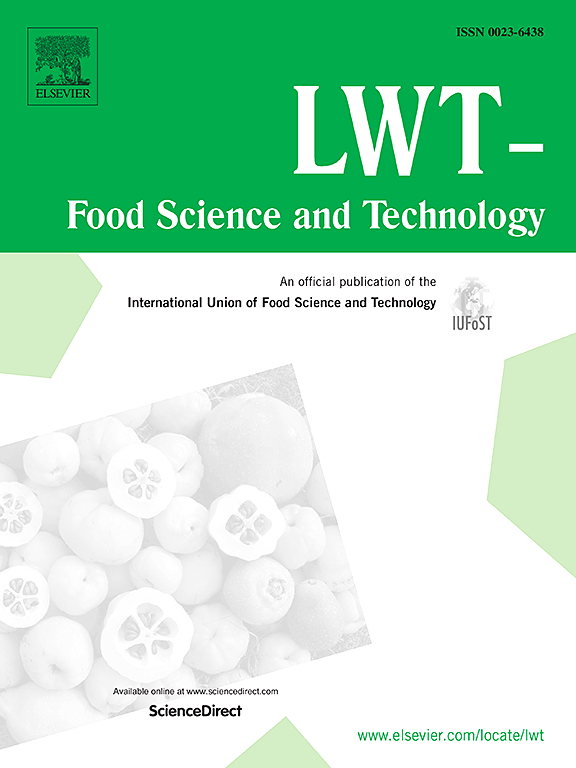Optimization of the ultrasound-assisted fermentation process of Buffalo's milk (Bubalus bubalis)
IF 6
1区 农林科学
Q1 FOOD SCIENCE & TECHNOLOGY
引用次数: 0
Abstract
Previous studies have demonstrated that the application of sub-lethal levels of ultrasound (US) can enhance fermentation efficiency and introduce novel characteristics to the resulting dairy products. However, exposing the lactic acid bacteria to US changed their metabolic activities. Therefore the optimum growth conditions of US-treated bacteria may vary from their native counterparts which is not reported to-date. In this work, the US was applied to a mixed culture of Lactobacillus bulgaricus, Streptococcus thermophiles, S. lactis, S. diacitilactic and S. cremoris as a pre-treatment for the fermentation of buffalo's milk. This study aimed to optimize the physicochemical and textural properties of buffalo's milk set-yoghurts using Response Surface Methodology. The experiments were conducted using the central composite design with three independent variables: sonication time (0–5 min), fermentation temperature (38–42 °C) and inoculum level (0.07–0.11 mL/100 mL). A control experiment was prepared according to the commercial conditions (0.1 mL/100 mL inoculum fermented at 42 °C without sonication). The inoculum concentration of 0.09 g/100 g. incubation temperature of 42 °C and sonication for 4.6 min were found optimum for the production of buffalo's milk set-yoghurt with 54.5 % desirability using ultrasound-assisted fermentation. The resulted processing conditions shortened the time to reach the maximum acidification rate (Tm) by 40 % and reduced the syneresis by 14.4 % (w/w) while improving the springiness of the gel by 36 % compared to the control set-yoghurt. Hence, it can be concluded that the optimized parameters for US-assisted fermentation offer a novel approach to enhance the efficiency of the fermentation process of buffalo milk set-yoghurt while improving the product quality and processing efficiency.
求助全文
约1分钟内获得全文
求助全文
来源期刊

LWT - Food Science and Technology
工程技术-食品科技
CiteScore
11.80
自引率
6.70%
发文量
1724
审稿时长
65 days
期刊介绍:
LWT - Food Science and Technology is an international journal that publishes innovative papers in the fields of food chemistry, biochemistry, microbiology, technology and nutrition. The work described should be innovative either in the approach or in the methods used. The significance of the results either for the science community or for the food industry must also be specified. Contributions written in English are welcomed in the form of review articles, short reviews, research papers, and research notes. Papers featuring animal trials and cell cultures are outside the scope of the journal and will not be considered for publication.
 求助内容:
求助内容: 应助结果提醒方式:
应助结果提醒方式:


